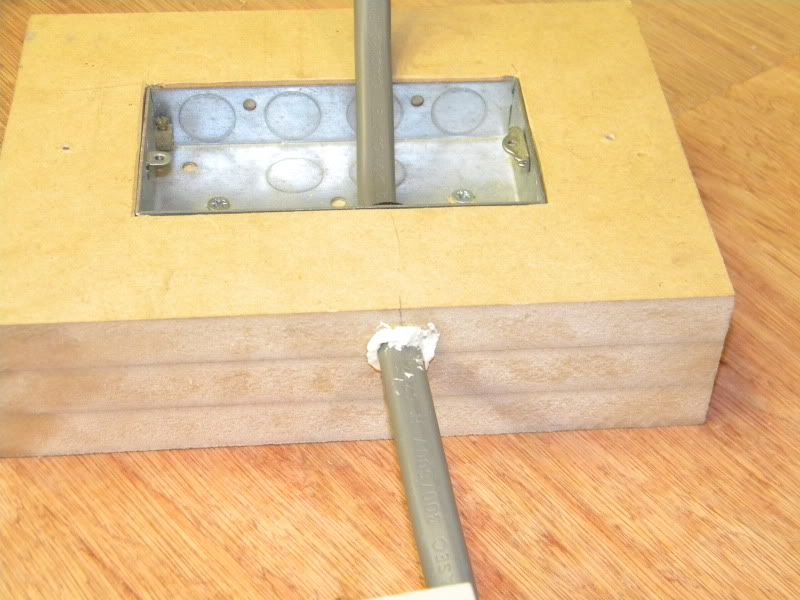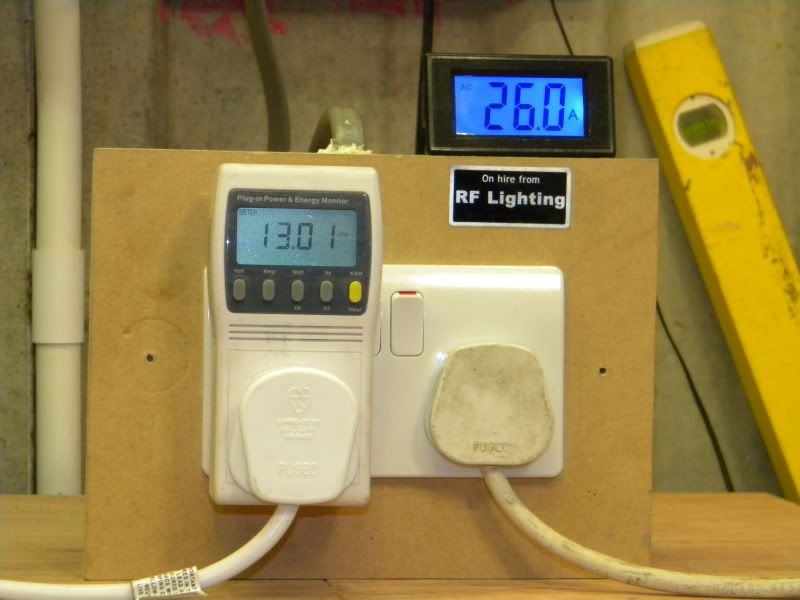it is surely a potential source of confusion that they do allow a plate with receptacles for two 13A plugs to be called 'a 13A socket'
But John, taking your argument one stage further, if your sockets are connected via a ring final circuit, protected at 32A, then only 2 of your socket-outlets could be rated at 13A, since the plugging-in of any more 13 A loads would overload the RFC.
We are not talking about diversity, and what you say again underlines the need for a clear and consistent definition of 'rating'/'rated'. We are talking about the 'rating' (primarily current-carrying/breaking capacity) of a physical socket, and that is no more dependent upon the circuit in which it installed than is the 'rating' (current-carrying capacity) of the cable which comprises that circuit. Diversity obviously represent a hornet's nest for discussion, and I think we would be well advised to keep away from that in this thread

I suppose that what I've really been saying, on behalf of the end-users, is that when people aquire a 'double something', they are extremely likely to assume (in the absence of any warning to the contrary) that it functionally the same as the corresponding two 'single somethings' - simply neater, perhaps cheaper etc.
To reiterate: each 13 A socket-outlet (set of 3 socket contacts intended to receive one BS 1361 Part 1 plug) is rated at 13A.
BS 1363 Part 2 is silent on the possible need to reduce the rating when more than one outlet is combined in a single plate.
True - but, as has been pointed out to us, what all manufacturers seem to have decided to do is to have "13A" very clearly moulded onto the back of the entire 'unit' of a double socket - and it would be extraordinarily unusual (and 'expected by no-one') for a label such as that to mean anything other than that 13A was the 'rating' of that entire unit (i.e. two 'sets of three'). In other words, despite silence of the Standard, manufacturers have effectively chosen to halve the rating compared with what it would be if the two sockets were separate.
BS 1363 Part 2 requires the temperature rise in normal service to not exceed certain limits, and the test for that is performed using a load of 14 A on one of the outlets and 6A on the other.
Abnormal use, i.e. plugging in two 13A loads to a twin socket-outlet for extended periods might result in overheating. That possibility is not discussed in the product standard. However, BS 7671 (or is it the OSG?) recommends avoidance of that situation by providing dedicated circuits for high-power loads likely to need connection for long periods.
I have no disagreement with any of that.
We have not really had any significant discussion about the engineering/physics aspects of all this, and I have to say that I'm very surprised by the implied degree of difference of thermal behaviour between single and double sockets. All single sockets must pass the temperature-rise test at 14A. The implications of the BS1363 test conditions, supplemented by what we have read about MK's testing of their products (even though we don't seem totally sure where that came from!), seems to be that a double socket would not pass the test at much above 20A - certainly not 26A, and even more certainly not 28A (2x14A).
All things being equal, the heat generated by two single plugs/sockets each carrying 13A should be the same as that generated by a 2x13A load on a double socket. Looking at the design of the 'guts' of single and double sockets, I would have thought that the double ones usually have a somewhat greater thermal capacity than that of 2xsingle sockets - which, if all other things were equal, would lead to less temperature rise in the double socket (for same total load as 2xsingle sockets). Counteracting that is that fact that the surface area available for radiation of heat is proportionately less (although not that much less) for a double socket, as is the thermal capacity of the plate itself - both of which would tend to lead to greater temperature rise for a given amount of heat generation. I would have guessed that those two factors would roughly cancel out, leading to similar temperature rises in the two situations - and certainly nothing like the !0A vs. 14A (per 'set of three') difference that we seem to be talking about. Any thoughts about the possible reasons for this degree of apparent difference?
Kind Regards, John




